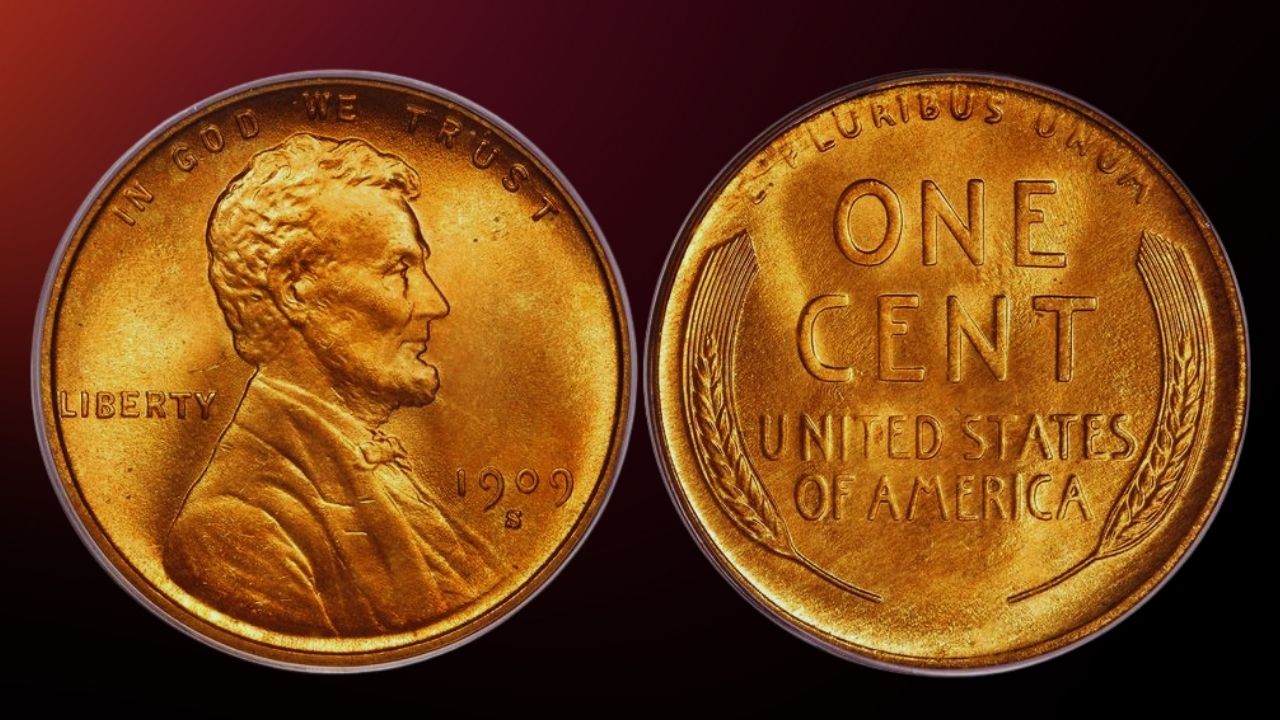Have you ever looked at the loose change in your pocket and wondered if any of it could be worth more than face value? If you have old pennies lying around, you might want to take a closer look. Some Lincoln wheat pennies are selling for astronomical amounts – we’re talking millions of dollars for a single coin.
What Makes a Lincoln Wheat Penny So Special?
Lincoln wheat pennies were minted from 1909 to 1958, featuring Abraham Lincoln on the front and two wheat stalks on the back. While most of these coins are worth just a few cents, certain rare versions have become some of the most valuable coins in American history.
The value comes down to three main factors: rarity, condition, and historical significance. When the U.S. Mint made mistakes during production or produced very limited quantities, those coins became incredibly scarce. Today, collectors are willing to pay enormous sums to own these pieces of history.
The Million-Dollar Wheat Pennies You Need to Know About
The 1943 Bronze Lincoln Cent
This is the holy grail of wheat pennies. In 1943, the U.S. Mint was supposed to make all pennies from zinc-coated steel to save copper for the war effort. However, a few bronze blanks from 1942 accidentally made it into the 1943 production run. Only about 20 of these bronze 1943 pennies are known to exist.
One of these pennies sold for $1.7 million in 2010, and experts believe pristine examples could fetch $5 million or more at auction today. If you find a 1943 penny that looks copper-colored instead of silver, you might have struck gold.
The 1909-S VDB Lincoln Cent
The very first year of Lincoln cent production created another valuable coin. The 1909-S VDB penny features the initials “VDB” (for designer Victor David Brenner) on the reverse. Public criticism led to the quick removal of these initials, making the 1909-S VDB extremely rare.
While not quite reaching million-dollar territory, high-grade examples can sell for $100,000 or more. If you have one in exceptional condition, it could be worth significantly more.
### The 1922 “No D” Lincoln Cent
In 1922, Lincoln cents were only supposed to be minted in Denver, which means they should all have a “D” mint mark. However, some coins were struck from worn dies that failed to impress the “D” clearly. These “No D” varieties are highly sought after, with values ranging from thousands to hundreds of thousands depending on condition.
How to Check if You Have a Valuable Wheat Penny
Step 1: Look at the Date
Start by checking the year on your penny. The most valuable dates to look for are:
- 1943 (especially if it’s bronze-colored)
- 1909-S VDB
- 1922 (check for missing “D”)
- 1914-D
- 1955 (doubled die variety)
Step 2: Examine the Mint Mark
The mint mark tells you where the coin was made. Look for small letters near the date:
- “D” means Denver
- “S” means San Francisco
- No letter means Philadelphia
Step 3: Check the Condition
Coin condition dramatically affects value. Look for:
- Sharp, clear details
- Minimal wear on Lincoln’s face and clothing
- Clear wheat stalks on the reverse
- Original luster (shine)
Step 4: Look for Errors
Manufacturing errors can make ordinary pennies extremely valuable. Watch for:
- Wrong metal composition (like bronze 1943 pennies)
- Doubled images (doubled die errors)
- Missing mint marks
- Off-center strikes
What Should You Do if You Think You Have a Valuable Penny?
Don’t Clean It
This is crucial – never clean old coins. Cleaning can destroy their value entirely. Even gentle cleaning can leave microscopic scratches that collectors can detect.
Handle with Care
Hold coins by the edges only. Fingerprints and oils from your skin can damage the surface and reduce value.
Get Professional Authentication
If you believe you have a rare penny, have it authenticated by a reputable coin grading service like PCGS (Professional Coin Grading Service) or NGC (Numismatic Guaranty Corporation). They’ll verify authenticity and assign a grade that affects value.
Do Your Research
Before selling, research recent auction results for similar coins. Prices can vary significantly based on condition and market demand.
The Reality Check: Most Wheat Pennies Aren’t Worth Millions
While it’s exciting to think about finding a million-dollar penny, it’s important to have realistic expectations. The vast majority of wheat pennies are worth between 3 cents and a few dollars. Even dates that are considered “semi-key” might only be worth $10-50 in average condition.
However, that doesn’t mean you should ignore your old pennies. Even common wheat pennies in excellent condition can be worth several times their face value to collectors who need them to complete sets.
Where to Look for Valuable Wheat Pennies
You might find valuable wheat pennies in:
- Old coin collections inherited from family
- Estate sales and flea markets
- Antique shops
- Your own pocket change (though this is increasingly rare)
- Bank rolls of pennies (some people still search these)
The Bottom Line
While finding a $5 million penny is extremely unlikely, valuable wheat pennies do exist and turn up from time to time. The key is knowing what to look for and taking care of any potentially valuable coins you find.
Remember, even if your wheat penny isn’t worth millions, it’s still a piece of American history. These coins circulated during some of the most significant events of the 20th century, from both World Wars to the Great Depression. That historical connection has value beyond any monetary worth.
So the next time you’re going through old coins or receive an older penny in change, take a moment to check the date and condition. You never know – you might just be holding a small fortune in your hand.
